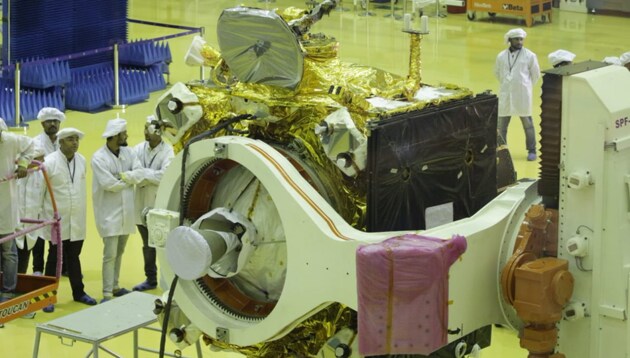Chandrayaan-2, India’s second moon mission, to be launched on July 15
ISRO had earlier indicated that it was looking at a 9-16 July launch window with the Moon landing expected to take place on 6 September.
The Indian Space Research Organisation said on Wednesday it will launch its second mission to the moon — Chandrayaan-2 — on July 15 in a mission that it said would be the most complex operation ever to be undertaken by the space agency.

Isro chairman K Sivan said the mission, expected to reach the moon by September 6-7, will be the first such operation near the south pole of the moon, and will make India just the fourth country to complete a soft landing on the lunar surface.
“Chandrayaan-2 will be launched on July 15 at 2.51 am,” Sivan said at a news briefing. “It will utilise the GSLV Mk-III [Geosynchronous Satellite Launch Vehicle Mark-III] launch vehicle, which is the most powerful launcher we have used till date,” he added.
With a total mission mass of 3.8 tonne, the entire project is set to cost ₹978 crore — ₹603 crore for the spacecraft and ₹375 crore for the GSLV Mk-III. Chandrayaan-2 consists of an orbiter, a lander (Vikram), and a rover (Pragyan).
The mission will send the rover to the moon’s south pole and Indian scientists hope to directly observe the water ice on the lunar surface, evidence for which was gathered by spectrometers aboard India’s first moon mission in 2008.
The latest lunar mission has seen several delays as experts suggested modifications to the orbit, the configuration, and the design of the lander of the mission. From its launch to the soft landing, the entire mission is set to take about 58 days. After the launch, it will take 16 days to raise the orbit and then five days to reach the moon’s orbit. Once there, it will make an orbit around the moon for 27 days, before the lander makes an attempt to de-orbit. After four more days, the lander will land in a difficult manouevre that lasts 15 minutes.
“Chandrayan-2 will land near moon’s south pole. It will take 15 minutes to land and will be the most terrifying moment because ISRO has never undertaken such a flight,” said Sivan. “It will take four hours from the time of landing to the time rover comes out. We might have landing pictures within 15 minutes.”
ISRO cited several reasons for selecting the moon’s south pole for the landing. It is convenient, Sivan said, because of ample solar light required for a mission highly dependent on solar power. Additionally, it has a near-flat surface and good visibility. Scientifically, this part is expected to have a higher presence of water and minerals, the Indian space agency’s chief said.
The rover and the lander of the mission will have a life of one lunar day, which is equal to 14 earth days, though the orbiter has a life of one year. The landing window is likely to be between September 6 and 7 because that is the beginning of a lunar day and scientific experiments will be conducted during this period.
“We will be looking for imaging of rock for elements like magnesium, calcium and iron and also for signs of water. It will also study exosphere of the moon,” ISRO said. While the orbiter and lander will communicate to earth directly, the rover cannot communicate directly because of some power limitations.
ISRO said it will follow the same launch strategy that was followed for Chandrayaan-1.






